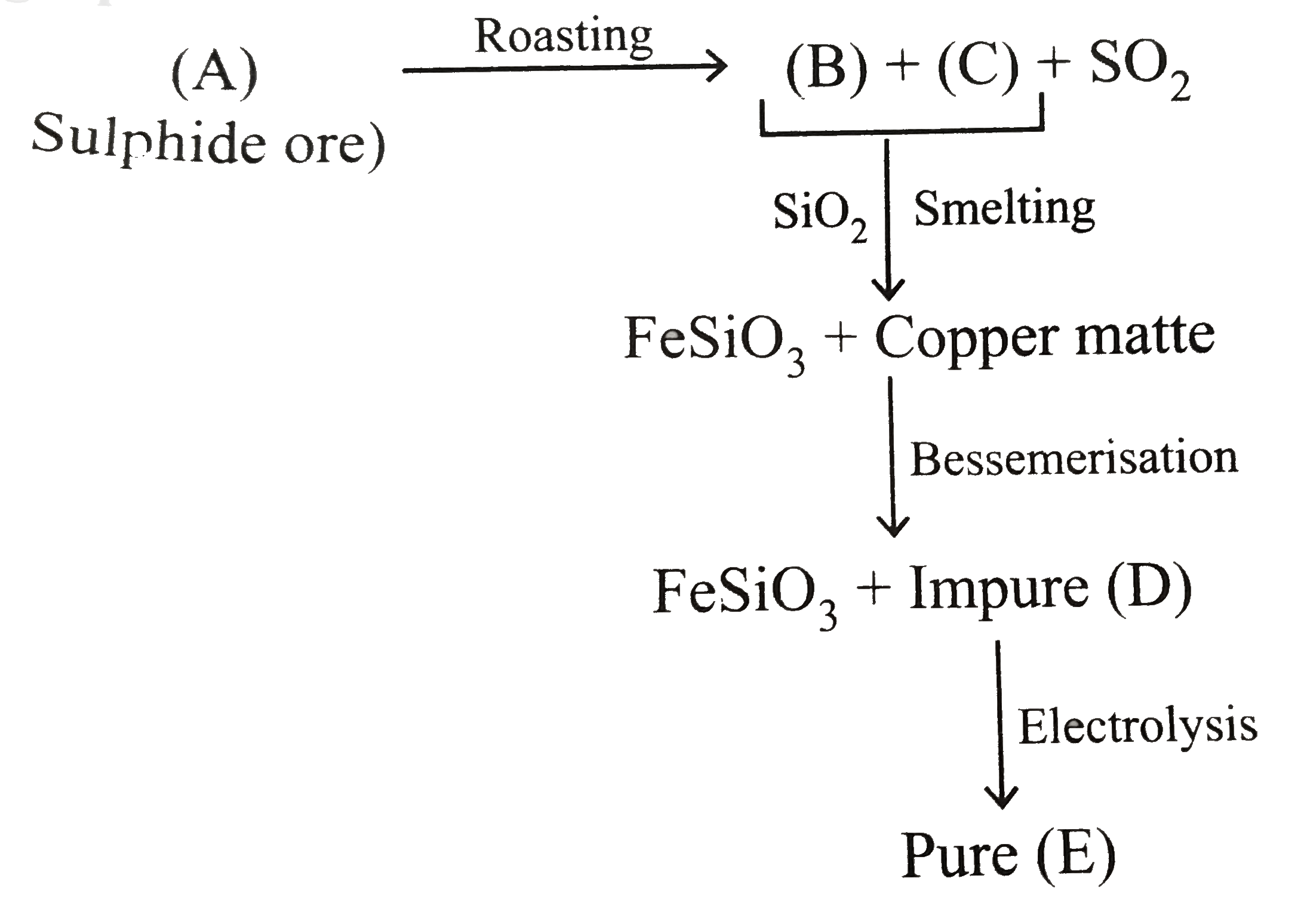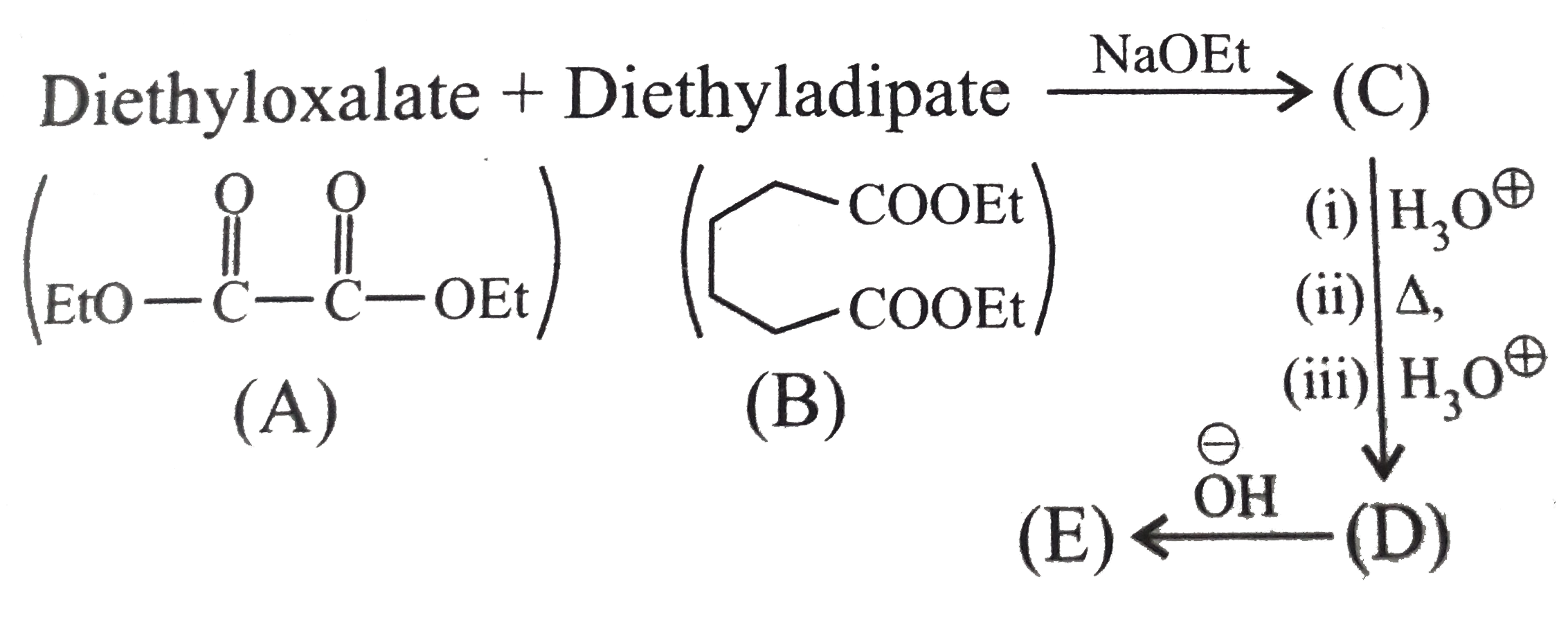Identify A to E.

Text Solution
Reactions are summarised as follows:
i. 
ii. DU in (A) =(2nC+2)−nH2=(5×2+2)−82=2∘
iii. (A) contains (−−−COOH) group (soda lime reaction), so 1 DU is present in (−−−COOH) group. Therefore, 1 DU would be due to the presence of (C=C) bond, since (A) undergoes oxidation.
iv. Proceeding reverse form the oxidation products of (A):

So the possible structure of (A):

Reactions:

|
Topper's Solved these Questions
- ALCOHOL,PHENOL AND ETHERSBOOK - CENGAGE CHEMISTRYCHAPTER - ALCOHOL,PHENOL AND ETHERSEXERCISE - Exercises Concept Application
33 Videos
- ALCOHOL,PHENOL AND ETHERSBOOK - CENGAGE CHEMISTRYCHAPTER - ALCOHOL,PHENOL AND ETHERSEXERCISE - Exercises Linked Comprehension
60 Videos
- ALCOHOL,PHENOL AND ETHERSBOOK - CENGAGE CHEMISTRYCHAPTER - ALCOHOL,PHENOL AND ETHERSEXERCISE - Solved Examples
17 Videos
- ALIPHATIC AND AROMATIC ALDEHYDES AND KETONESBOOK - CENGAGE CHEMISTRYCHAPTER - ALIPHATIC AND AROMATIC ALDEHYDES AND KETONESEXERCISE - Archives Subjective
29 Videos
Similar Questions
Knowledge Check

Identify (E).ABilser CuBBlister CuCPig ironDFeO
Identify A, D, E and F in the diagram of an antibody molecule given below :

View SolutionIdentify A, D, E and F in the diagram of an antibody molecule given below:

View SolutionSelect the option that correctly identifies A to E in the given flow char.

View SolutionSelect the option that correctly identifies A to E in the given flow char.

View Solution
Identify (E).
View SolutionIdentify (C) to (E) :
 .
.
View SolutionIdentify (C) to (E) :
 .
.
View Solution

